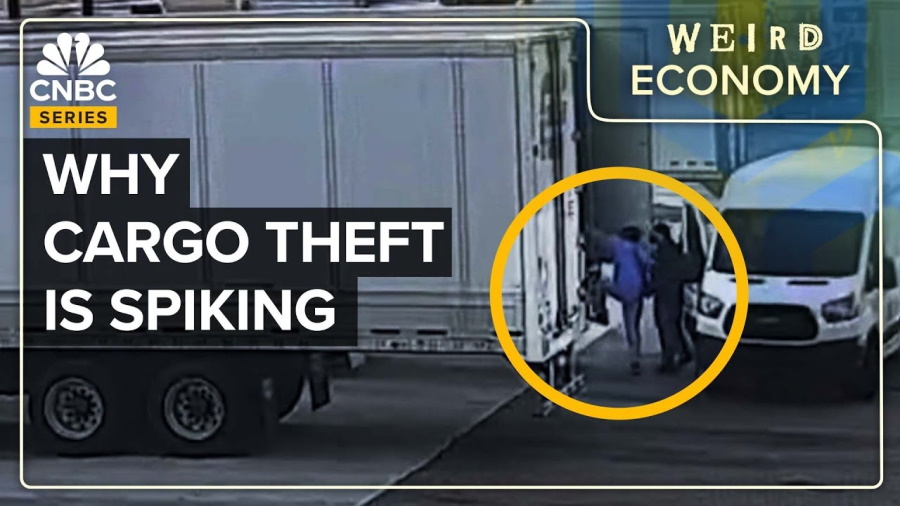HOW CARRIERS ARE MOVING FREIGHT MORE EFFICIENTLY AND REDUCING CARBON EMISSIONS.
Big news happening right now in the transportation industry is the adoption of “green” practices. Carriers are making many changes to reduce carbon emissions both on the road and at their facilities. Here’s a look at what carriers are doing today and what’s coming soon.
SmartWay: Working Together Toward a Common Goal
The broadest sustainability program in transportation is SmartWay, a collaboration between shippers, carriers, and the Environmental Protection Agency. Participants report their carbon emissions and commit to annual reductions.
More than 2,700 carriers participate in SmartWay. Nearly 100% of the domestic shipments that Universal Traffic Service manages for clients are tendered to carriers in the SmartWay program.
According to the EPA, SmartWay has saved 170 million barrels of oil—equivalent to the annual energy use of 6 million homes. Emissions reductions under the program include:
- 73 million metric tons of carbon dioxides
- 1,458,000 tons of nitrogen oxides
- 59,000 tons of particulate matter
If your company ships freight, you can become a registered SmartWay Shipper. SmartWay partners include companies such as Apple, General Motors, IBM, Johnson Controls, Pella, SunPower, and Walmart.
How Carriers Are Growing Greener
Carriers are using a variety of methods to reduce emissions and improve efficiency.
Fleet Efficiency
Each generation of transportation equipment is greener than the last. By retiring older equipment, carriers are making their fleets more efficient (and safer, too).
Wearing Skirts
Many carriers have installed skirts on their semi-trailers. These skirts hang between the front and rear wheels of the trailer. Standard skirts improve fuel efficiency by 5%. Advanced skirt designs stretch that improvement to 7%. A tail that folds out from the back of the trailer adds another 1% to 5% in fuel efficiency.
Limiting Truck Speeds
Some carriers install governors that limit top speeds to around 65 miles per hour. The National Highway Traffic Safety Administration and the Federal Motor Carrier Safety Administration recently proposed legislation that would make speed limiters mandatory.
Ultra Low-Sulfur Diesel Fuel
The environmental benefits of ultra-low-sulfur diesel fuel are so compelling that many over-the-road carriers have voluntarily made the switch even though it costs more and slightly decreases fuel efficiency. Container cargo ships made a mandatory switch to low-sulfur fuel a couple years ago.
Route Optimization Software
New software uses real-time traffic and weather data to feed drivers the most efficient routes on the fly.
Alternative Energy Sources
Some carriers are going beyond transportation in their efforts to reduce carbon emissions. For example, A. Duie Pyle powers its largest warehouse and distribution facility entirely with solar energy. Estes Express Lines has installed solar systems in three of its terminals. Old Dominion Freight Line has reduced greenhouse gas emissions by 1,500 tons annually through solar power, and the solar system Saia installed at its Charlotte, NC facility exceeds the entire energy consumption for that location. Carriers like Saia are also using battery-powered lifts to reduce propane usage and installing energy-efficient LED lighting throughout its terminals.
Coming Soon: Self-Driving Trucks & Other Big Changes
Technology advancements are driving the next wave of sustainability improvements. A great example is the use of adaptive cruise control to allow truck platooning. With platooning, a lead truck controls the acceleration and braking for the trucks behind it. As a result, the trucks can drive much closer together, which improves overall fuel efficiency by as much as 15%.
Self-driving trucks are also in the works and may be hauling loads as soon as 2020. The industry is even exploring the feasibility of self-driving trains, planes, and container ships.
At least two manufacturers are developing electric-powered semi trucks. Nikola Motor Company expects its Nikola One hydrogen-powered semi truck to be available in 2020, with additional models to follow. Tesla also has announced plans to develop electric trucks, but so far has not given a timeline for delivery.
Long-term, the industry plans to migrate from fossil fuels to renewable energy sources. Until that day arrives, expect carriers to get more and more efficient at how they move goods around the globe.
Steps You Can Take for More Sustainable Shipping
There are a number of steps you can take to reduce the carbon emissions associated with the transportation of your freight:
- Consolidate shipments on your heaviest lanes, which reduces truck miles.
- If you have prepaid inbound shipments, you can gain control over the cost and environmental impact by converting them to collect.
- See if it makes sense to replace clusters of individual shipments with milk runs, continuous moves, or multi-stop loads.
- Source from suppliers located nearer to you. Not only does this reduce fuel consumption, but also transportation costs and transit times as well.
- Air shipments have the largest carbon footprint. As much as possible, plan enough lead time to move parcel and expedite shipments by ground service.





